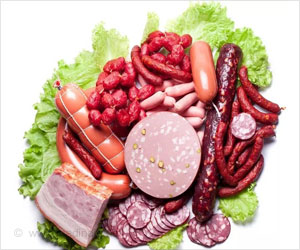Red meat, certain species of fish which have the CMAH gene produce a sugar that triggers inflammation and increases the risk of cancer.
Highlights
- A specific sugar Neu5Gc which is present in red meat, certain varieties of fish and dairy products are associated with tumor development. //
- The evolutionary history of the CMAH gene - which allows the synthesis of this sugar was analyzed.
- Scientists at the University of Nevada have shown which groups of animals have lost the gene and are suitable for human consumption.
How Does Red Meat Trigger Cancer?
About two million years ago, humans experienced a genetic change that differentiated us from most primates. This change protected us from some diseases, but caused current consumer products, such as red meat, to pose a high risk to health.
At that time in evolution, a gene called CMAH - which allows the synthesis of a sugar called Neu5Gc - was deactivated. This carbohydrate is found in red meat, some fish and dairy products. If humans consume products derived from animals that have the gene, the body suffers an immune reaction to sugar, which is a foreign substance in the body. This can cause inflammation, arthritis and even cancer.
Species That Carry CMAH gene
"In a first analysis we scanned all the available genomes. We only found the gene in a few bacteria, in a pair of algae, and in the deuterostomes, a group of animals that includes vertebrates and echinoderms, among others. The non-deuterostomes animals did not present the gene. Next, we focused on the 322 deuterostomy genomes that were available," the Spanish researcher explains to Sinc.
Certain Fish Also Carries CMAH gene
Very few fish species had been studied to know whether or not they had amounts of toxic sugar. "Our analyzes show that there are fish that have the CMAH gene and others that do not, but for the moment the Neu5Gc sugar has been measured in very few of them. In fish that do have this gene, sugar is found in very small proportions in their meat, but in high quantities in caviar. This may be because the gene is expressed specifically in eggs or oviducts," says the scientist.
Sateesh Peri, a master’s course student at the Alvarez-Ponce laboratory, adds: "It turns out that caviar, one of the most expensive meals in the world, is also one of the products with the highest concentrations of Neu5Gc." However, the research also reveals a multitude of fish that do not have the CMAH gene, and whose caviar is expected to be free of Neu5Gc.
Chicken, turkey and duck, free of CMAH
Consuming chicken, turkey or duck does not have the negative effects of consuming red meat. Another group of animals that does not have CMAH genes are reptiles, except for one species of lizard.
In addition to the above-mentioned food risks, the CMAH gene also plays a key role in the transplantation of organs from animals to humans, a practice known as xenotransplantation: it is one of the factors that determine whether these organs are going to be rejected or not by the human body. When the organ of an animal that has the CMAH gene is transplanted to a person, the human body can react to the Neu5Gc sugar and reject the organ.
"It is possible that the deactivation of the CMAH gene during human evolution has protected humans from certain pathogens. For example, there is a type of malaria that needs Neu5Gc sugar to cause infection. This type of malaria affects some primates, but not humans," declares Álvarez-Ponce.
Bottomline
The presence or absence of the CMAH gene in different animals, which this study has characterized, points out which animals we should not eat (or eat only moderately), and which animals may present pathogenic microbes that affect humans, according to the scientists.
If the animal has the gene, then its meat can have the same negative effects as red meat. If the animal does not present the gene, it may contain pathogenic microbes that bind to the Neu5Ac sugar (the precursor of Neu5Gc) and, therefore, may affect humans.
The researchers hope that this study will have a significant impact on later work in the fields of nutrition, genetics and medicine. "To determine in which groups and at what moments of the evolution the CMAH gene has been deactivated is critical to know which species are most likely to contain the toxic Neu5Gcy sugar, which is recommended for feeding, xenotransplantation, and certain scientific studies", they add.
Reference
- Sateesh Peri, Asmita Kulkarni, Felix Feyertag, Patricia M. Berninsone, David Alvarez-Ponce. "Phylogenetic distribution of CMP-Neu5Ac hydroxylase (CMAH), the enzyme synthetizing the pro-inflammatory human xeno-antigen Neu5Gc". Genome Biology and Evolution (2017). https://doi.org/10.1093/gbe/evx251.
Source-Medindia
















